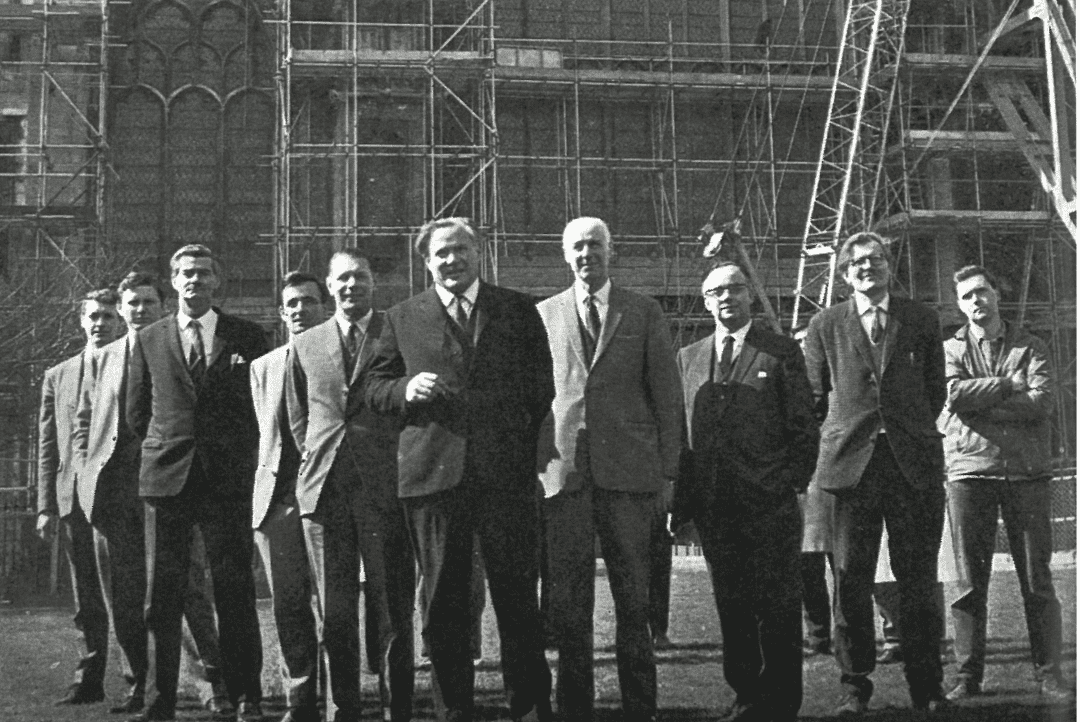York Minster
In 1965, Bernard Feilden, the newly appointed Surveyor to the Fabric of York Minster, started a dedicated programme of work which would save this grand cathedral from total collapse. It was the first time in hundreds of years that the Minster had been inspected and recorded stone by stone. York Minster is by far the largest medieval building in England, and for this reason, is perhaps the most well documented and one of the most celebrated projects completed by Feilden + Mawson in the past 70 years.
Tales have been recounted about how Bernard could be seen in the evenings, pacing the roof leads, recording every defect and crack on the building. As a result, he was able to create a 3ft long Perspex model of the Minster which acted as a crucial tool for assessing structural damage – the cracks were painted onto the model.
The repairs involved masonry work – grouting, reinforcement, and minor rebuilding in local trouble spots. Simultaneously, the whole of the inside of the building was cleaned, the plaster infill panels and wooden ribs on the vaults whitened, and the carved bosses gilded on a red ground. The internal decoration also made it easier to detect any future signs of structural decay.
The success of York Minster relied on many factors, one of which was that a major building group, local to York were appointed to undertake the works. Another resounding factor was the ‘innovation, insight and talent’ of the whole team. Bernard wrote in an article for the Yorkshire Post: ‘As Architect in charge, I must comment on the enthusiasm of all concerned for carrying out this restoration. I have never known a job where labour and management has such unity of purpose; I would like to go on record in saying that the modern craftsman is as good as the medieval one’. Bernard went on to commission a musical composition for York from the Minster organist Francis Jackson. He truly believed in involving the community in his work and that the success of the project relied on everyone. Commissioning a score for York Minster embodied his idiom that: “Architecture is not only seen but something that is experienced with all the senses”.

